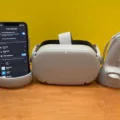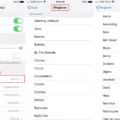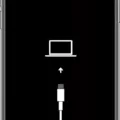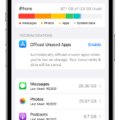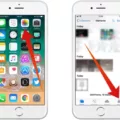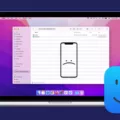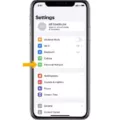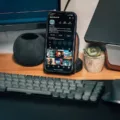The iPhone is a powerful device that allows users to connect to various servers and external devices, expanding its functionality and capabilities. Whether you need to access files on a server or connect to external devices, the iPhone provides convenient options to make it happen.
To connect to a server or external device, start by tapping on the Files app on your iPhone. You can find it on the home screen or by swiping down and using the search feature. Once in the Files app, tap on the “Browse” tab at the top of the screen.
To connect to a server, tap on the “Tap to Connect to Server” option. Here, you can enter a local hostname or a network address. After entering the required information, tap on the “Connect” button.
Once connected, you will have different connection options available. You can choose to connect using SMB (Server Message Block), FTP (File Transfer Protocol), or SFTP (Secure File Transfer Protocol). Select the option that best suits your needs and tap “Next.”
After selecting the connection type, you will be presented with a list of server volumes or shared folders. Browse through the available options and select the desired volume or folder to access its contents.
If you encounter any issues with connecting to a server or external device, you may need to reset your network settings on your iPhone. To do this, go to the “Settings” app and tap on “General.” From there, select “Reset” and then “Reset Network Settings.” Keep in mind that resetting your network settings will remove all saved Wi-Fi networks and passwords, so be prepared to reconnect to Wi-Fi networks afterward.
It’s important to ensure that you have a stable internet connection when attempting to connect to a server or external device. Check if Wi-Fi or cellular data is enabled in the “Settings” app on your iPhone. Additionally, make sure that Airplane mode is turned off. You can also test the internet speed by opening another network app to see if it works properly.
If you’re experiencing trouble logging into the Apple ID server, it could be related to your internet connection. Apple typically tries to log in using either a cellular connection or Wi-Fi. Verify that you have a strong connection by checking the wireless status at the top of your iPhone screen.
The iPhone offers convenient options to connect to servers and external devices. By following the steps mentioned above, you can easily access files and expand the functionality of your iPhone. Remember to ensure a stable internet connection and troubleshoot any network issues if necessary.
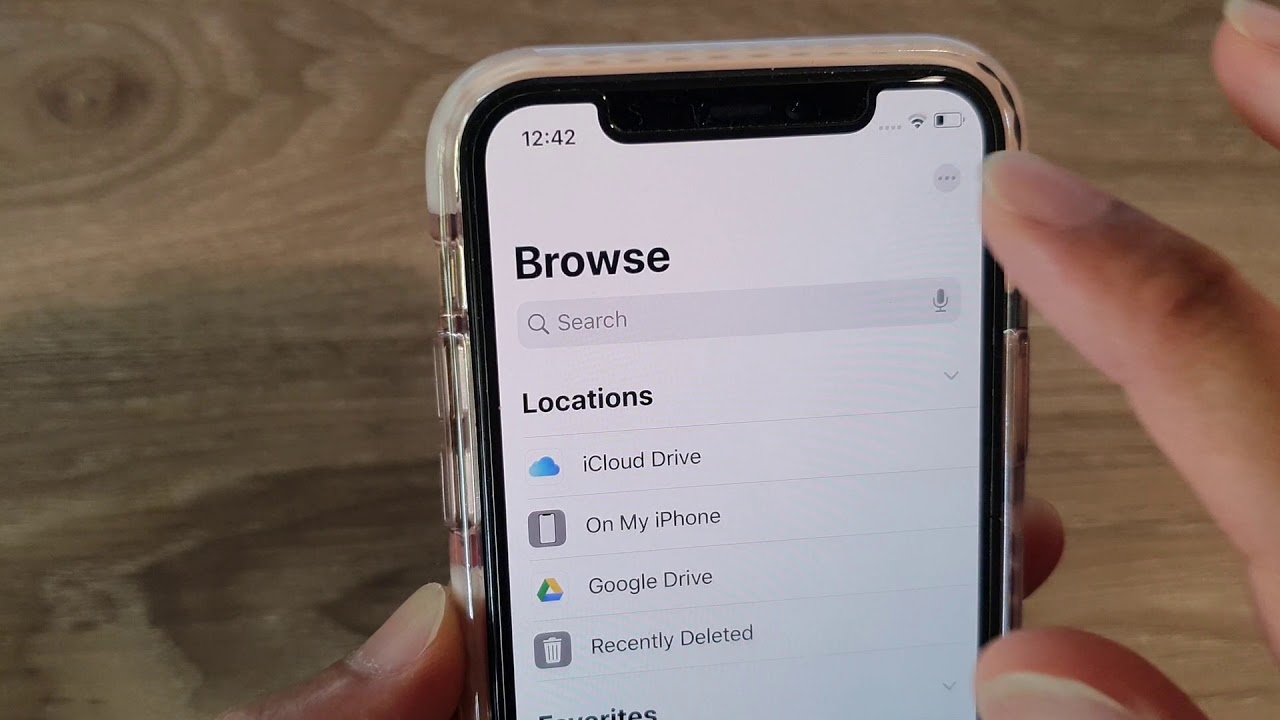
How to Access Your iPhone Server?
To access the server on your iPhone, follow these steps:
1. Open the Files app on your iPhone by tapping on the app icon on your home screen.
2. At the top of the Browse screen in the Files app, tap on the “…” (three dots) button.
3. From the options that appear, tap on “Connect to Server.”
4. You will be prompted to enter a local hostname or a network address. Type in the address of the server you want to connect to and tap on “Connect.” Note that you will need to know the specific address or hostname of the server you want to connect to beforehand.
5. Next, you will be presented with different connection options. Choose the one that suits your needs. This can be a local network or an external server.
6. After selecting the connection type, tap on “Next.”
7. In the Browse screen, you will now see a list of available server volumes or shared folders. Locate the specific server volume or shared folder you want to access and tap on it to open it.
By following these steps, you will be able to access your iPhone server and browse the files or folders within it.
How to Fix Your iPhone Not Connecting to The Server?
To resolve the issue of your iPhone not connecting to the server, you can try the following steps:
1. Check your internet connection:
– Ensure that you have a stable and working internet connection.
– Verify that other devices are able to connect to the same network without any issues.
– If you’re using Wi-Fi, try restarting your router or connecting to a different network to rule out any network-related problems.
2. Restart your iPhone:
– Sometimes, a simple restart can fix connectivity issues. Press and hold the power button until the slider appears, then slide to power off. After a few seconds, press and hold the power button again until the Apple logo appears.
3. Update your iPhone:
– Make sure that your iPhone has the latest software updates installed. Go to Settings > General > Software Update and check for any available updates. If an update is available, download and install it.
4. Reset network settings:
– Resetting your network settings can help fix any network configuration issues. Please note that this will remove all saved Wi-Fi passwords and VPN settings. To reset network settings, go to Settings > General > Reset > Reset Network Settings.
5. Check date and time settings:
– Incorrect date and time settings on your iPhone can sometimes cause server connection problems. Go to Settings > General > Date & Time and ensure that the “Set Automatically” option is enabled.
6. Disable VPN or proxy settings:
– If you have a VPN or proxy configured on your iPhone, try disabling it temporarily to see if it resolves the issue. Go to Settings > VPN or Settings > Wi-Fi > (i) icon next to your connected network, and disable any configured VPN or proxy settings.
7. Forget and reconnect to Wi-Fi network:
– If you’re having trouble connecting to a specific Wi-Fi network, you can try forgetting the network and then reconnecting to it. Go to Settings > Wi-Fi, tap on the (i) icon next to the network name, and select “Forget This Network.” Then, reconnect to the Wi-Fi network by selecting it from the list and entering the password if required.
If none of these steps resolve the issue, you may need to contact your internet service provider or consider seeking assistance from Apple Support for further troubleshooting.
Why is Your iPhone Saying No Server?
There could be several reasons why your iPhone is displaying the error message “No Server.” Here are a few possible explanations:
1. Connectivity issues: Check if you have a stable internet connection. Ensure that your WiFi or cellular network is enabled in the Settings menu of your iPhone. If using WiFi, make sure you are within range of the network and that the network is functioning properly. If using cellular data, verify that you have sufficient signal strength.
2. Airplane mode: Ensure that the Airplane mode is not enabled on your iPhone. When Airplane mode is activated, it disables all wireless connections, including WiFi and cellular data.
3. Server problems: The issue could be with the server itself. The website or service you are trying to access may be experiencing technical difficulties or undergoing maintenance. In this case, wait for a while and try again later.
4. DNS configuration: The Domain Name System (DNS) translates domain names (e.g., www.example.com) into IP addresses that your device can understand. If there is a problem with your DNS configuration, your iPhone may not be able to connect to the server. Restarting your router or resetting your network settings on the iPhone might help resolve DNS-related issues.
5. Firewall or security settings: Sometimes, firewall or security settings on your iPhone or network may block access to certain servers. Check your device’s security settings to ensure there are no restrictions in place that could be causing the issue.
6. Outdated software: Ensure that your iPhone’s operating system and apps are up to date. An outdated software version may have compatibility issues with certain servers, leading to the “No Server” error.
If none of these solutions work, you might consider contacting your internet service provider or Apple Support for further assistance.
What Does It Mean When There is An Error Connecting to the Apple ID Server?
When you encounter an error connecting to the Apple ID server, it signifies that there is an issue preventing your device from establishing a connection with Apple’s server. This can occur due to various factors, but one common reason is a problem with your internet connection.
There are two ways your device attempts to log into the Apple ID server: through a cellular connection or via WiFi. To troubleshoot the issue, it is essential to ensure that you have a stable and reliable internet connection. Here’s how you can check:
1. Cellular Connection:
– Ensure that your device has a cellular signal by checking the signal bars at the top of your phone screen.
– If you have a weak signal or no signal at all, try moving to a different location where you can get better reception.
– Additionally, check if you have sufficient mobile data or credit to establish a connection.
2. WiFi Connection:
– Verify that you are connected to a WiFi network by checking the WiFi icon at the top of your phone screen.
– If you are not connected to WiFi, go to your device’s settings and select a nearby WiFi network.
– Ensure that the WiFi network you are connected to is functioning correctly. You can try connecting other devices to the same network to test its reliability.
If you have confirmed that your internet connection is stable, but you still cannot log into the Apple ID server, there may be other factors at play. In such cases, it is advisable to check for any ongoing outages or maintenance on Apple’s servers by visiting their official website or contacting their support.
Remember, an error connecting to the Apple ID server can be caused by various factors, but starting with a thorough check of your internet connection is a good first step in troubleshooting the issue.
Conclusion
Connecting servers or external devices with Files on iPhone can be done through the Connect to Server feature. By tapping on the Browse screen and selecting Connect to Server, users can enter a local hostname or network address to establish a connection. This allows for seamless access to server volumes or shared folders.
However, it is important to ensure that network settings are properly configured on the iPhone. If encountering any issues, resetting network settings can be a viable solution. This can be done by navigating to Settings > General > Transfer or Reset [Device] > Reset > Reset Network Settings (for iOS or iPadOS 15 or later) or Settings > General > Reset > Reset Network Settings (for iOS or iPadOS 14 or earlier).
To troubleshoot further, it is essential to check if WiFi or cellular network is enabled on the device. Additionally, verifying that Airplane mode is disabled is crucial. Testing the internet speed by using another network app can also help in determining if the problem lies with the internet connection.
Lastly, if there are difficulties logging into the Apple ID server, it is advisable to check the wireless status on the device. Ensuring a strong and stable connection is paramount for successful login attempts. By keeping these factors in mind, users can effectively connect servers and external devices with Files on their iPhones.

